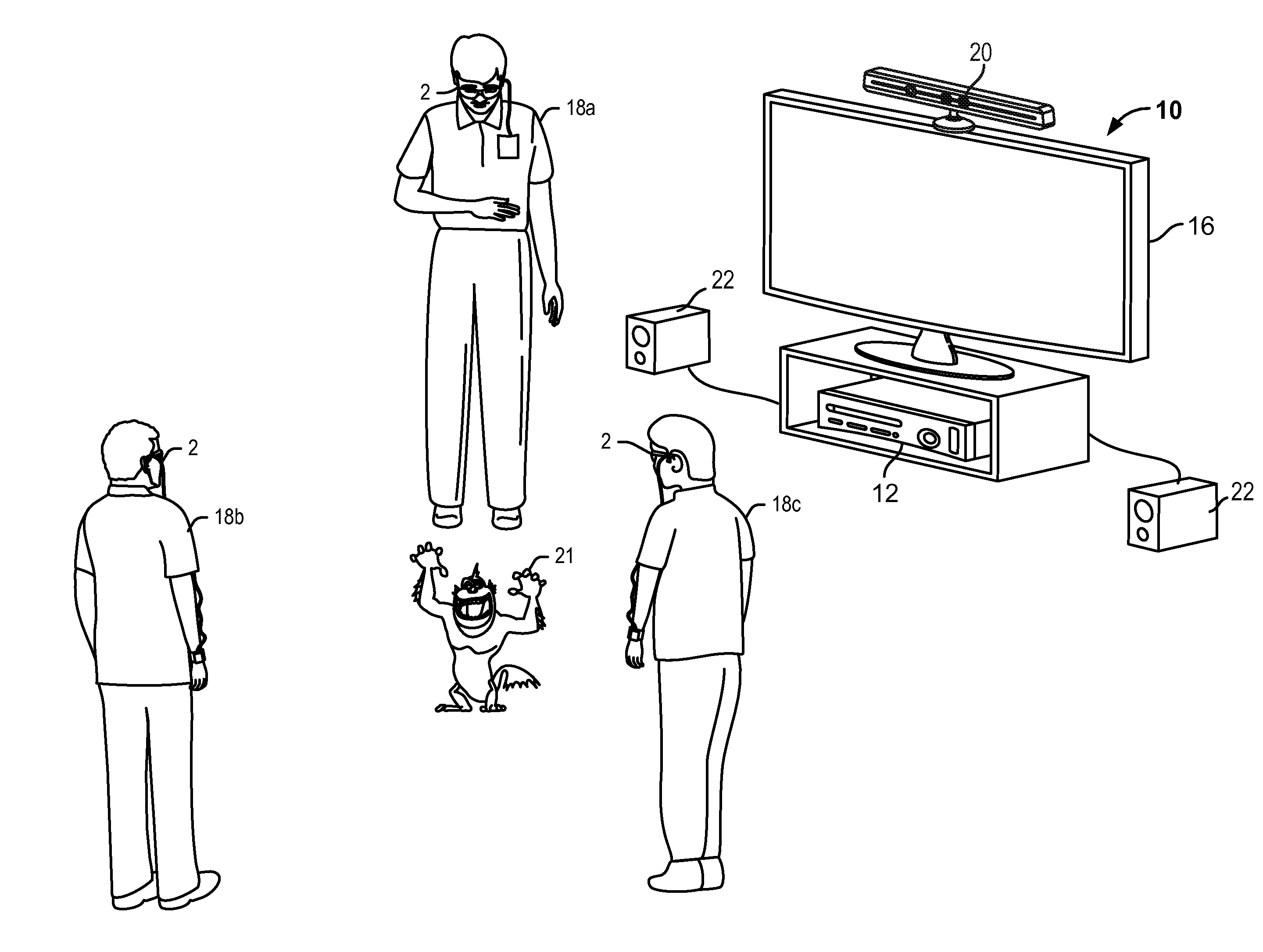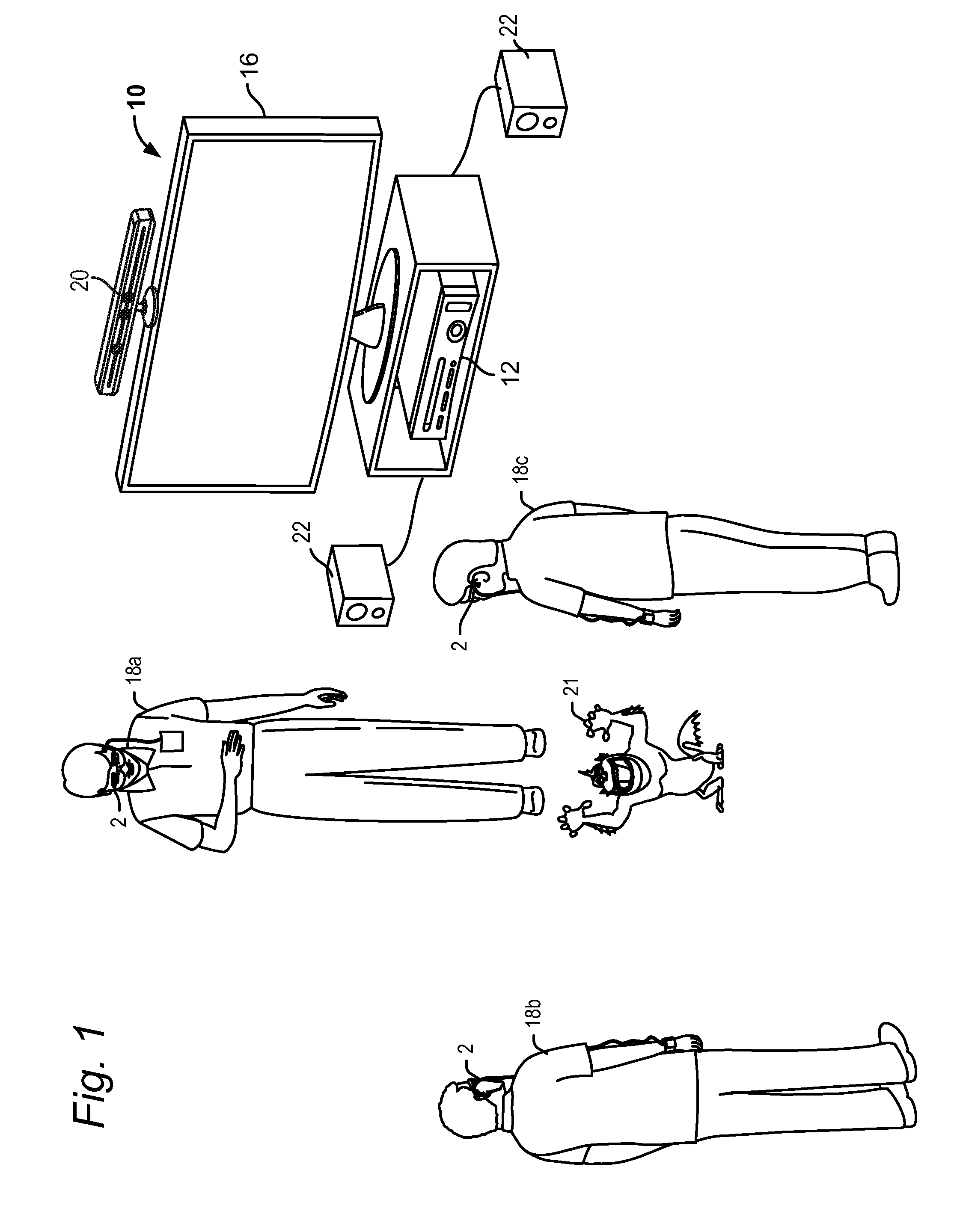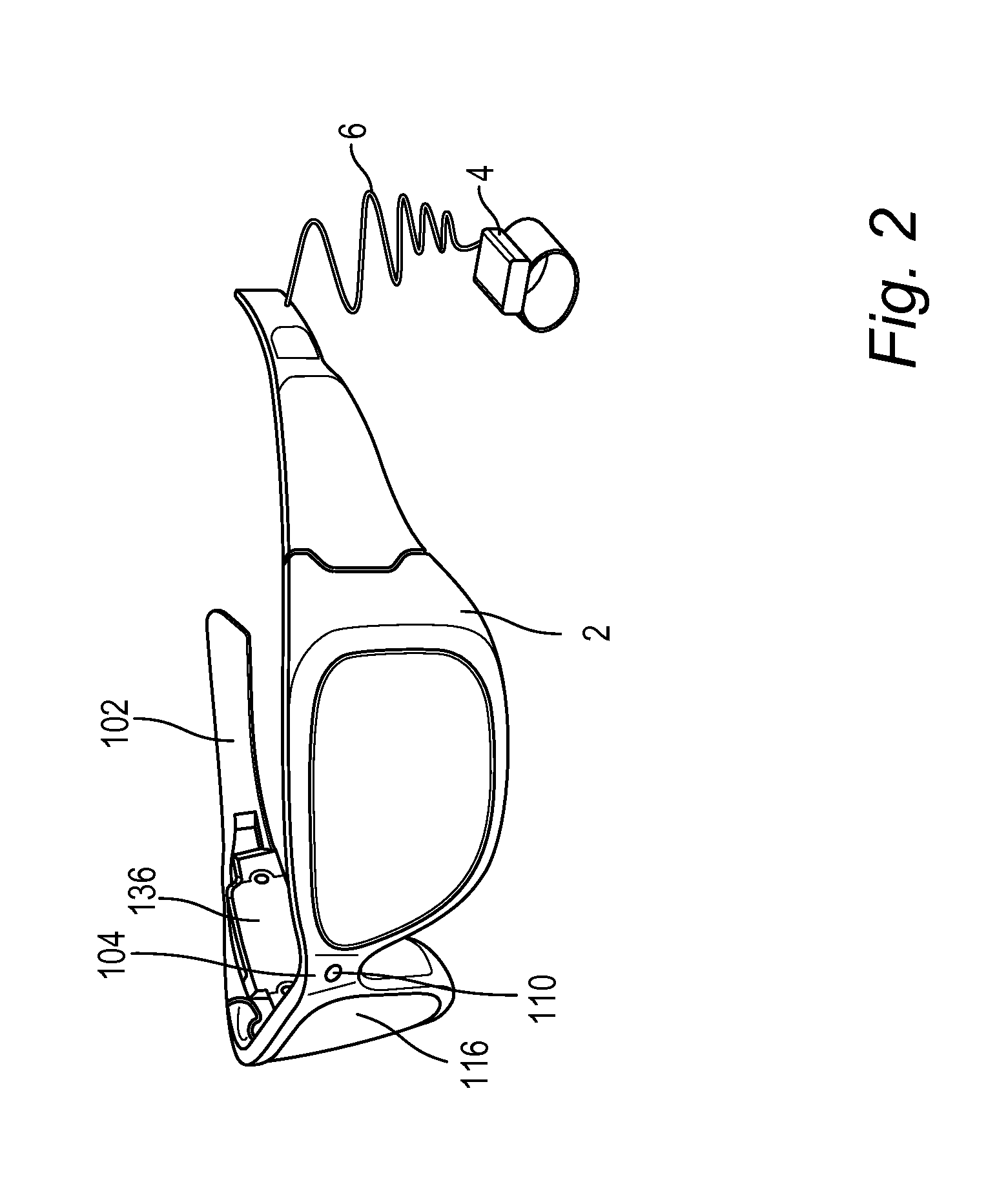Low-latency fusing of virtual and real content
a technology applied in the field of low-latency fusing of virtual and real content, can solve problems such as inherent latency in the system
- Summary
- Abstract
- Description
- Claims
- Application Information
AI Technical Summary
Benefits of technology
Problems solved by technology
Method used
Image
Examples
Embodiment Construction
[0023]A system is disclosed herein that can fuse virtual objects with real objects. In one embodiment, the system includes a head mounted display device and a processing unit in communication with the head mounted display device worn by each of one or more users. The head mounted display device includes a display that allows a direct view of real world objects through the display. The system can project virtual images on the display that are viewable by the person wearing the head mounted display device while that person is also viewing real world objects through the display. Multiple users may further see the same virtual object from their different perspectives, as if each is looking at a real world object from their different positions. Various sensors are used to detect position and orientation of the one or more users in order to determine where to project the virtual images.
[0024]One or more of the sensors are used to scan the neighboring environment and build a model of the s...
PUM
 Login to View More
Login to View More Abstract
Description
Claims
Application Information
 Login to View More
Login to View More - R&D
- Intellectual Property
- Life Sciences
- Materials
- Tech Scout
- Unparalleled Data Quality
- Higher Quality Content
- 60% Fewer Hallucinations
Browse by: Latest US Patents, China's latest patents, Technical Efficacy Thesaurus, Application Domain, Technology Topic, Popular Technical Reports.
© 2025 PatSnap. All rights reserved.Legal|Privacy policy|Modern Slavery Act Transparency Statement|Sitemap|About US| Contact US: help@patsnap.com



